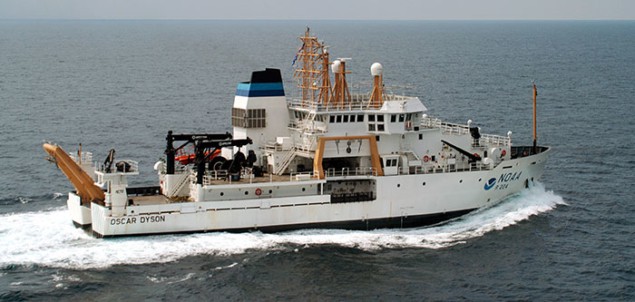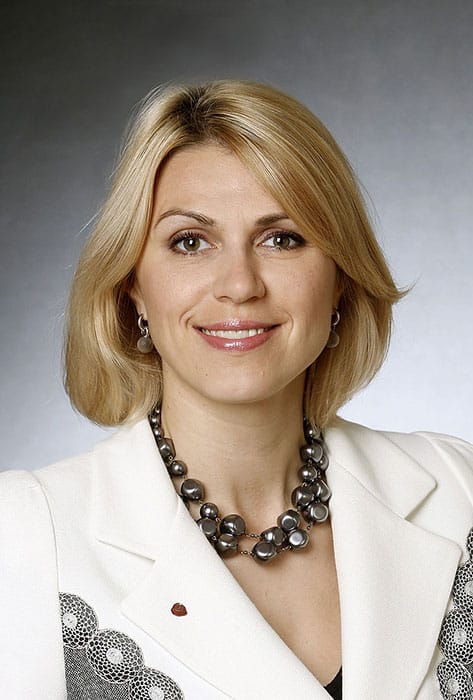Flash Physics is our daily pick of the latest need-to-know developments from the global physics community selected by Physics World‘s team of editors and reporters

Trump’s 2018 budget proposal concerns US scientists
“The Trump administration’s proposed budget would cripple the science-and-technology enterprise through short-sighted cuts to discovery science programmes and critical mission agencies alike,” says physicist Rush Holt, who is chief executive of the American Association for the Advancement of Science. Holt was responding to US president Donald Trump’s proposed budget for the 2018 financial year, which begins on 1 October. While the document contains only broad details and will probably be modified by Congress, science appears likely to lose out. The Trump administration wants to increase spending on national defence by $54bn to $603bn for the next financial year. This will be paid for by a similar reduction in spending on discretionary items. This includes money for such agencies as the Department of Energy (DOE), the National Science Foundation (NSF), and the National Institutes of Health – all of which are major funders of science. The budget proposal targets DOE programmes apart from maintenance of the national nuclear stockpile for a cut of 17.9% in FY 2018. Funding for the DOE’s Advanced Projects Research Agency-Energy, created by president Obama’s first energy secretary, Steven Chu, is eliminated. The National Institutes of Health, traditionally supported on a bipartisan basis in Congress, would suffer a loss of almost $6bn – about 20%. And the NSF’s funding seems likely to fall by $7bn. NASA, by contrast, stands to lose less than 1% of its funding. But the administration wants the agency to shift its focus more towards “deep-space exploration rather than Earth-centric research”. Supporters of the Environmental Protection Agency (EPA) and environmental research have voiced particular concern because the agency stands to lose 31.5% of its funding. Research at the National Oceanic and Atmospheric Administration (NOAA) also seems set to fall. Its research division stands to lose $126m, representing 26% of its budget.
Strain helps locate quantum dots
A new way of locating tiny quantum dots in a material has been developed by Julien Claudon, Maxime Richard, Jean-Philippe Poizat and colleagues at the University of Grenoble Alpes in France. The technique involves using a piezoelectric transducer to excite resonant vibrational modes of a wire-like antenna structure made of the semiconductor gallium arsenide. Embedded within the antenna is a layer in which the quantum dots – tiny pieces of indium arsenide measuring just 10 nm across – are located in random positions. When illuminated with a laser, the quantum dots emit fluorescent light, the colour of which is dependent upon the mechanical strain on the quantum dot. When the material is set vibrating, the colour of the fluorescent changes with time and also according to the positions of the individual quantum dots. By analysing this information, the team was able to determine the positions of individual quantum dots to a precision of 1 nm. The method could be useful in creating devices in which quantum dots self-assemble in random positions. It could also locate nitrogen vacancies in diamonds and rare-earth ions in crystals. The technique is described in Physical Review Letters.
Estonia to join CERN

Estonia is planning to become a member of the CERN particle-physics lab near Geneva. The Baltic nation has had a co-operation agreement with CERN since 1996, paying around €300,000 to the lab each year. Estonia’s minister for entrepreneurship and information technology, Urve Palo, says that membership would allow Estonian companies to compete with firms from other member states for procurement contracts and that the plan to join CERN will be part of a briefing document introduced into parliament next week. If Estonia became a member, it is expected to pay around €1.4m each year to the lab. Currently, CERN has 22 member states, with Serbia and Cyprus being associate members in the pre-stage to membership.
- You can find all our daily Flash Physics posts in the website’s news section, as well as on Twitter and Facebook using #FlashPhysics. Tune in to physicsworld.com later today to read today’s extensive news story on twisted plasmons.



